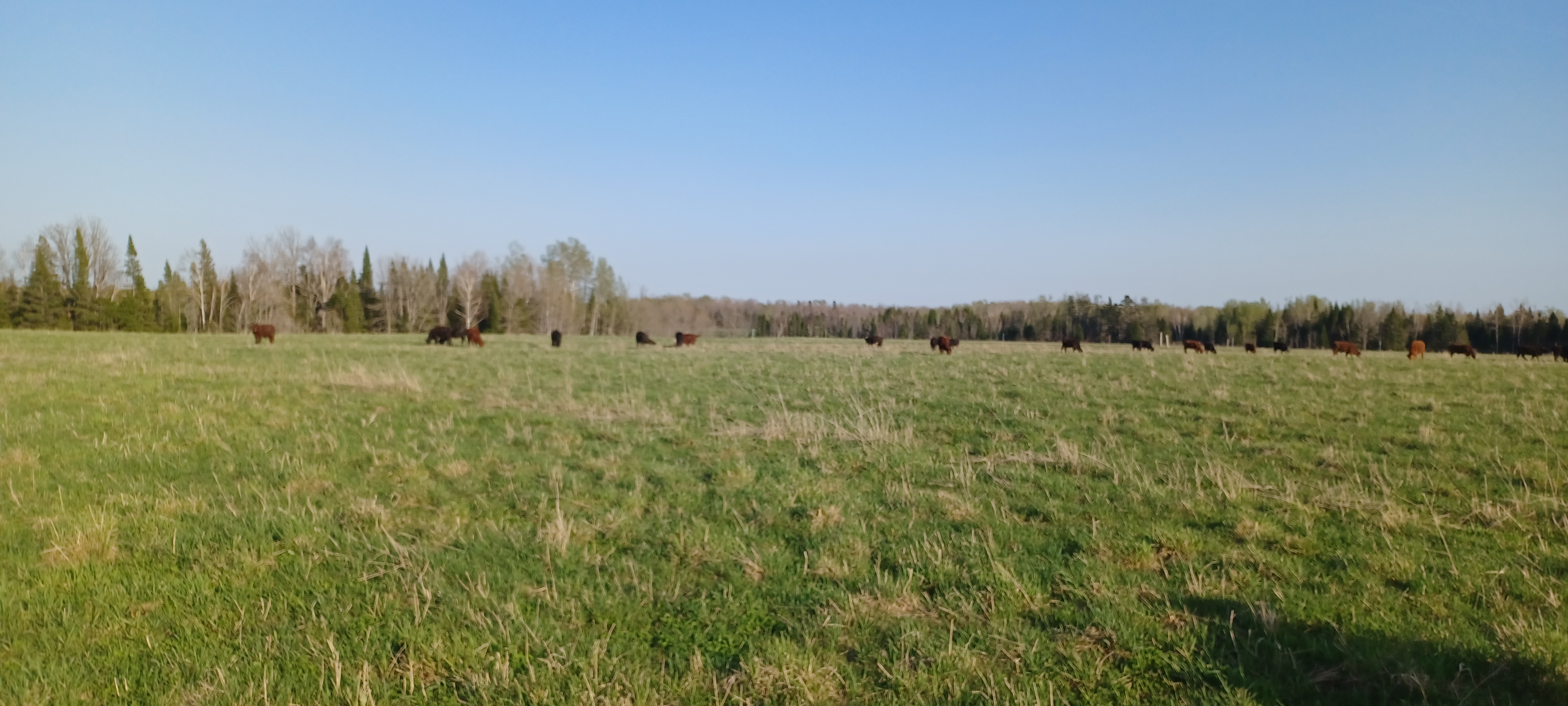
Throughout Michigan, farmers are watching the skies and wondering when the Great Lakes are going to send measurable rain showers. With dry forecasts, producers need to make plans to ensure their fields' longevity and health allow for future grazing or hay cuttings. Assessing your farm’s needs is critical to making the best decision for your operation.
For hay fields, consider leaving the cutting height taller to minimize increased soil temperatures and negative effects on the crops’ root growth. According to Marc Sulc from Ohio State University, “I really don’t think mowing will help stimulate regrowth that much, especially in grasses. In alfalfa, mowing off old growth might help a little, but new growth will probably occur from crown shoots regardless of mowing, if the plant is released from drought stress.” This will allow the field to recover more easily once rains resume in the future. Leaving more residue in the field will minimize temperature fluctuations.
Hot temperatures can be detrimental to soil biology. According to Derrick Raspor with the Natural Resources Conservation Service, “Clean plowed fields are prone to erratic temperature fluctuations, whereas covered fields exhibit more consistency.” This applies to hay fields as well—more residue left on the soil will benefit the plant and soil biology by reducing soil temperatures. For information specifically on alfalfa, see “Managing alfalfa during drought” from the 2012 drought. It is important to check fields for pests that may call for early mowing such as potato leafhoppers or alfalfa weevil.
If a hay field can be grazed, this would be a suitable time to do so. Using a rotational grazing system where animals are allowed to access only a certain piece of land for a designated time would maximize harvest efficiency and allow you to better manage post-grazing residual. According to Victor Shelton, “When we are in a period of decreasing moisture, and especially if growth is slowing down, then we need to adjust that stop grazing height, leaving slightly more behind and not grazing as close.”
The interaction between the stock, the plants and the soil biology promotes improved regrowth in the future, assuming we leave enough leaf area. Rotating animals quickly through the field and moving them to a new paddock at least every three days is key. When animals are allowed more than three days in a paddock, they will often go back to just-grazed plants and graze the new growth.

Livestock producers whose pastures are struggling can incorporate the above strategies as well. Managing stock numbers will also be key. While not always easy, de-stocking may be a strategy you should consider. Jason Rowntree discussed this in his 2012 Michigan State University Extension article for cattle producers. Buying your winter hay supplies early should also be considered to lower your costs. Early purchases would be based on concerns of continued dry weather and later prices increasing.
Grazing stalks or planting a harvestable cover crop after a wheat crop may also alleviate rising feed costs. Sub-dividing larger fields to allow for longer rest periods or fencing off new areas is also recommended. With feed costs generally being the greatest single expenditure for cattle and small ruminant operations, minimizing large expenditure jumps is crucial to the farm’s financial health. See the following 2021 article for more information on managing perennial pastures to withstand drought.
In summary
Mowing now
- Hay for future use.
- Mow high if you must mow.
- Makes the field easier to renovate.
- Favors future legume growth (especially alfalfa).
Leave as is
- Higher residue.
- Decreased soil temperatures.
- Less moisture loss.
- Lower stress on the plant allows for better future harvests.
- Grasses may not be fully dormant.
Grazing now
- Positive interaction from the stock promoting quicker regrowth.
- Graze high, recommend leaving 4-8 inches depending on species.
Farmers need to assess their individual situations and make the decision that makes the most sense for their farm. Successful managers are flexible and adaptable to change.
Source : msu.edu